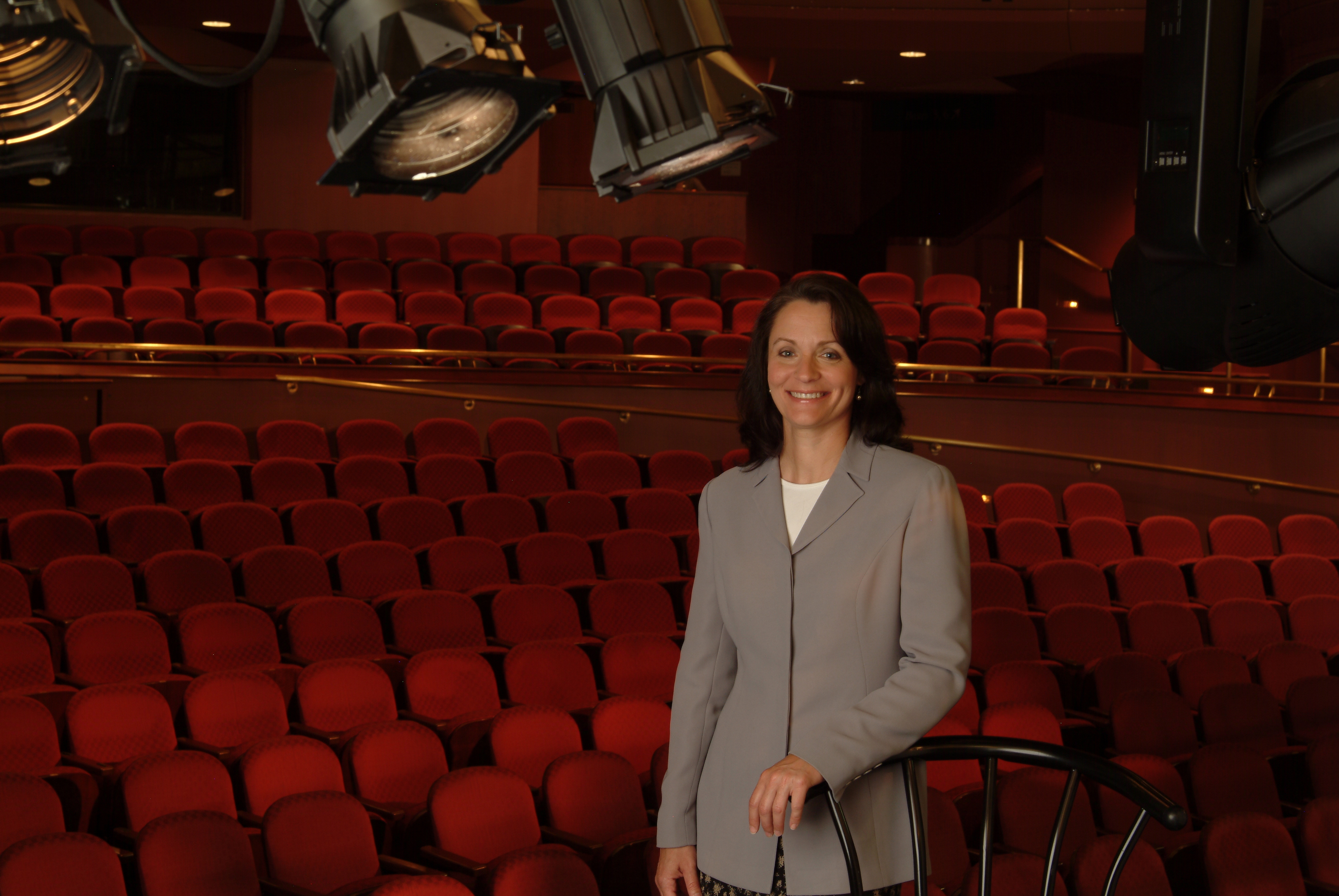Ruth Waalkes named executive director of university's new Center for the Arts

Ruth Waalkes, director of artistic initiatives at the Clarice Smith Performing Arts Center at the University of Maryland, has been named executive director of the Center for the Arts at Virginia Tech. She will begin this position in late September.
In this new position, Waalkes will have overall responsibility for the programming and operation of Virginia Tech’s Center for the Arts, a yet-to-be-built complex of new and renovated facilities, which will house a 1,300-seat performance hall; a visual arts gallery; and teaching and research spaces that will include a creative technologies lab, a collaborative performance lab, and a communications studio.
Construction on the center is projected to begin in 2010 and is scheduled to be completed by 2013.
“As the first director of the Center for the Arts, Waalkes will provide critical leadership as we work to enhance the quality of life on our campus and in the community we serve by offering a broad and rich set of cultural experiences,” said Mark McNamee, senior vice president and provost. “Fulfilling the promise of the university’s Arts Initiative, and building an arts center is no small task, but Waalkes’ success at the University of Maryland uniquely qualifies her for this very important position.”
"The Center for the Arts will create significant opportunities for Virginia Tech, and for Blacksburg and the surrounding region,” said Waalkes. “It will be filled with a broad array of dynamic performing and visual arts programs, and will offer people many ways to deepen their experience with the arts. I am honored to serve as the center's executive director, and look forward to working with campus and community partners on this extraordinary project.”
Waalkes has been director of artistic initiatives at Maryland’s Clarice Smith Performing Arts Center since 2002. In this role, she oversaw all artistic planning and programming at the center, which has become a vital part of both the University of Maryland campus community and the greater arts landscape in the metropolitan Washington D.C. region since its opening in 2001.
She joined the Clarice Smith Center in 1999 as the associate director for corporate and foundation relations. In 2001, she became associate director for special projects and managed the center’s dedication week events and inaugural programs in September of that year and other major events and collaborations during the center’s first season.
From 1996 to 1999, Waalkes was the director of engineering alumni affairs for the University of Maryland Alumni Association. From 1991 to 1995, she was executive director of Volunteer Fairfax, a nonprofit service organization, and was director of programs for the Arts Council of Fairfax County from 1986 to 1991. She received her bachelor’s degree in theatre and drama from the University of Michigan.
“The forthcoming construction that will create the new Center for the Arts is a critical component of the broader Arts Initiative, which will support new ways of teaching and learning at the many intersections between the arts and other disciplines,” said Minnis E. Ridenour, chair of the Arts Initiative Steering Committee. “Planning for the new Center for the Arts continues to move forward under the direction of our international architecture firm, Snohetta, and the naming of the executive director is a key decision in preparing for the breaking of ground in the summer of 2010 and the opening of the center in June of 2013.”
The center will support a new Center for Creative Technologies in the Arts which will bring together the visual and performing arts with Virginia Tech’s strong scientific, computing, and engineering capabilities. Its efforts will be focused on developing new methodologies of teaching, experiencing, and delivering the arts.
In addition, the Arts Initiative seeks to strengthen performance, visual, and creative arts programs and enhance programming and scholarship university-wide; attract professional artists to perform or exhibit their work on campus; design models that advance creative and critical-thinking skills in primary and secondary school environments; act as a catalyst for economic and community development, driving tourism, entrepreneurship, and innovation; and establish dynamic community and regional partnerships among government, business, and citizen groups.
Also see The Campaign for Virginia Tech case statement on the Center for the Arts.




